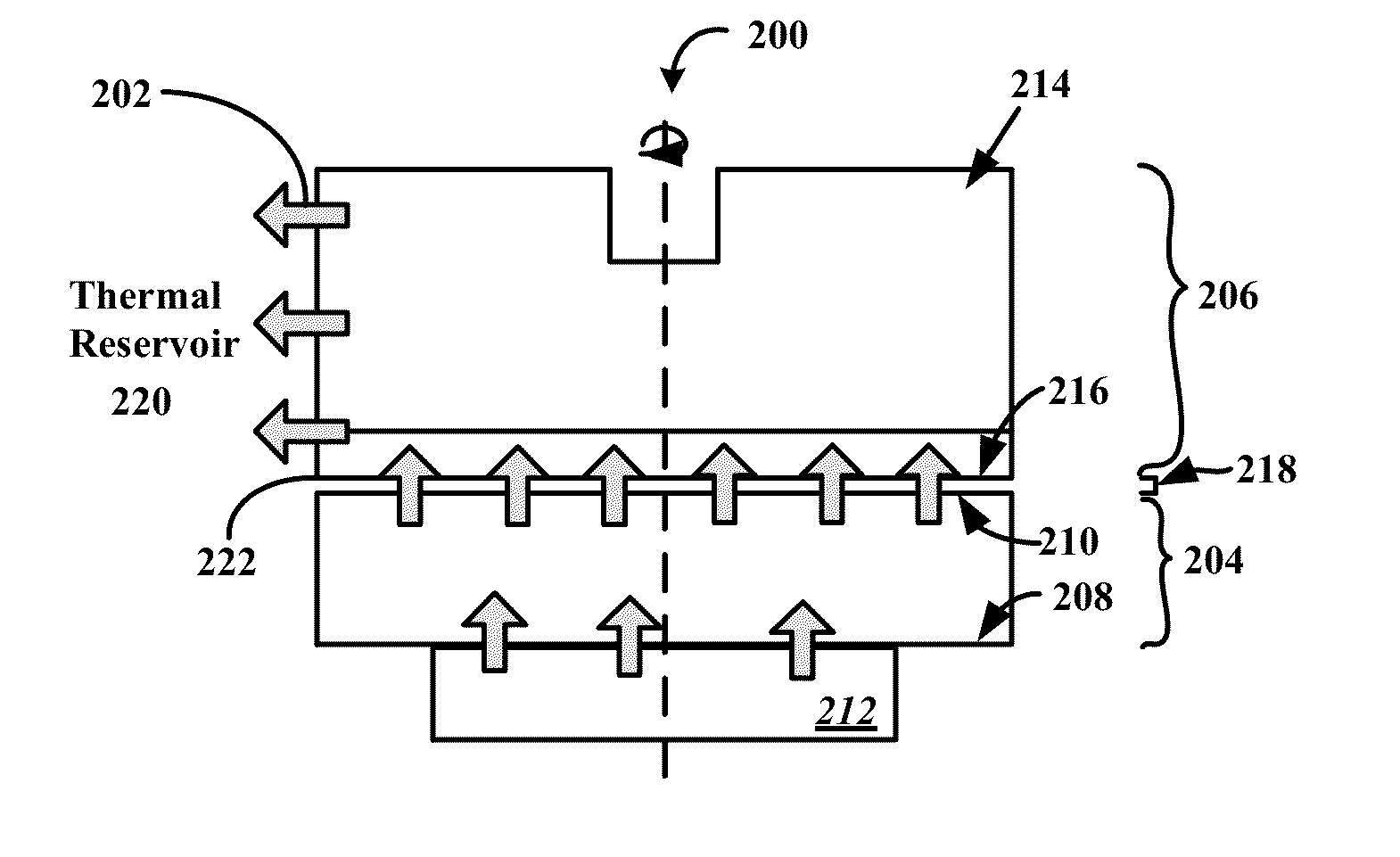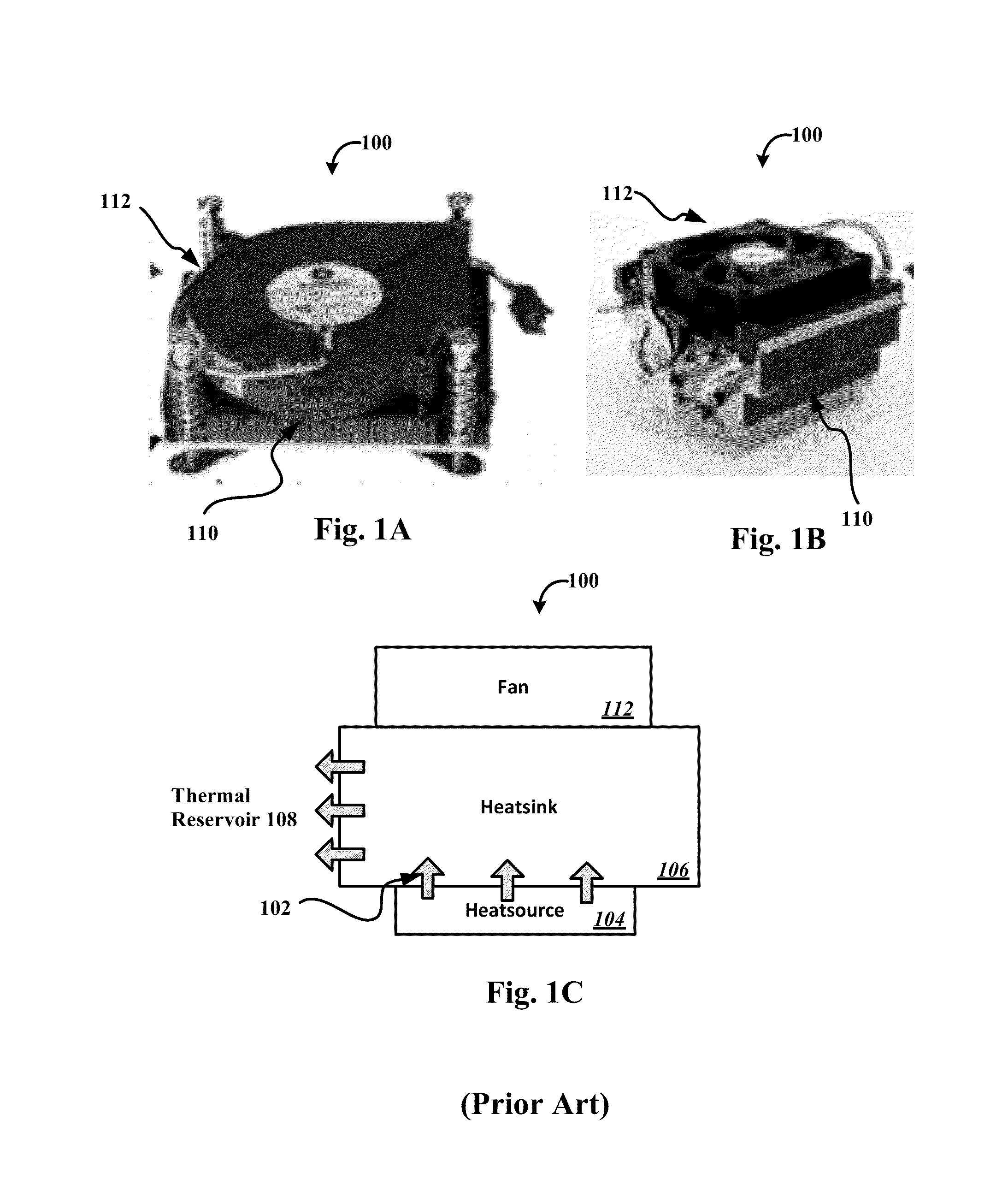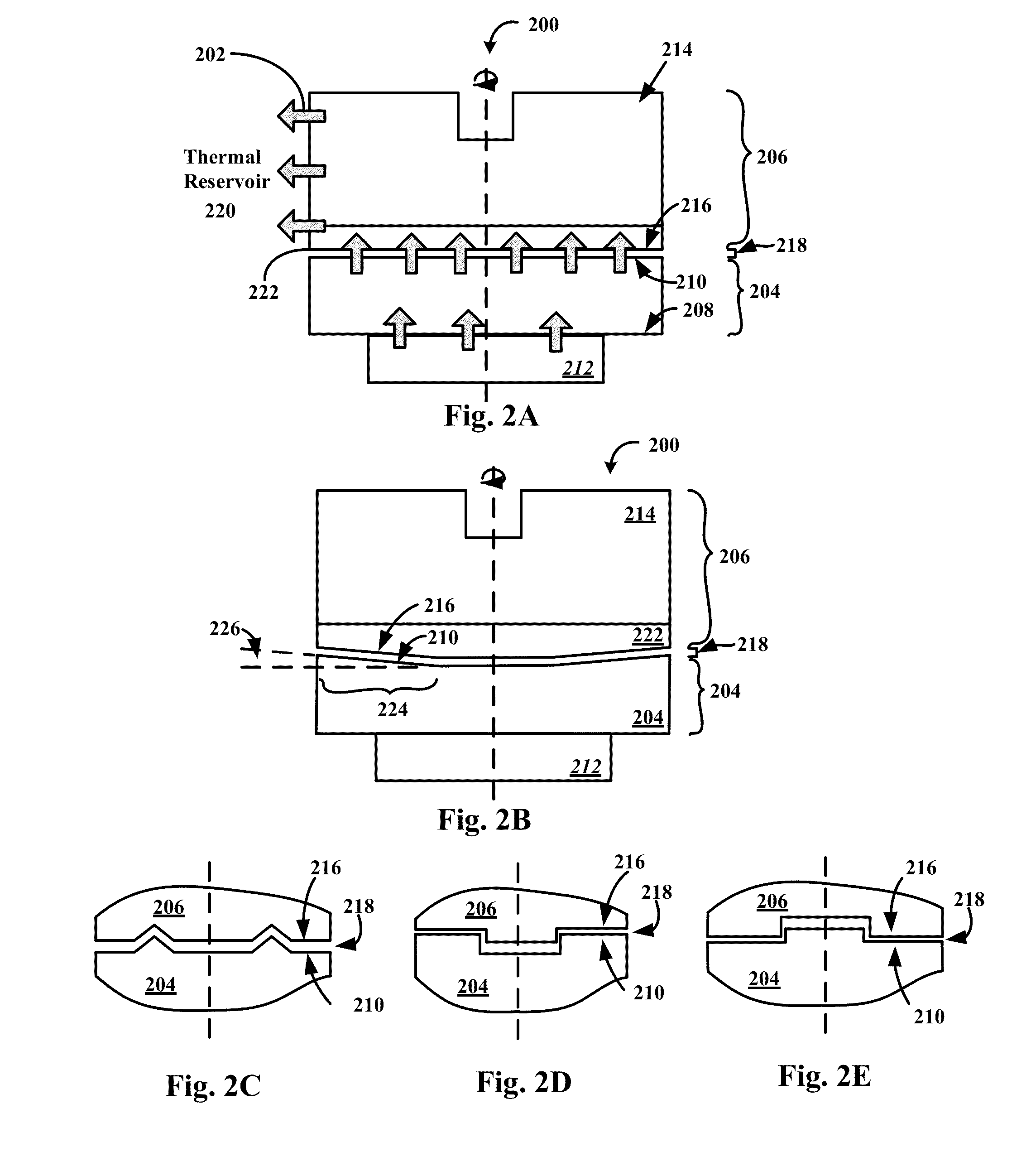Kinetic heat sink having controllable thermal gap
a heat sink and controllable technology, applied in the direction of semiconductor/solid-state device details, lighting and heating apparatus, laminated elements, etc., can solve the problems of energy loss, undesired sealing problems, and waste heat generation of electric circuits and devices
- Summary
- Abstract
- Description
- Claims
- Application Information
AI Technical Summary
Benefits of technology
Problems solved by technology
Method used
Image
Examples
Embodiment Construction
[0006]In accordance with illustrative embodiments of the invention, a kinetic heat sink apparatus has a stationary member that includes a base structure having both a first heat-conducting surface and a second heat-conducting surface to conduct heat therebetween. The first heat-conducting surface is fixably mountable to a heat-generating component. The kinetic heat sink also has a rotating structure rotatably coupled with the base structure. This rotating structure has a movable heat-extraction surface facing the second heat-conducting surface across a spatial gap. The rotating structure is configured to transfer heat from the second heat-conducting surface to a thermal reservoir communicating with the rotating structure. The rotating structure and stationary member has at least two pairs of opposing surfaces configured to form a first thrust and second opposing thrust to maintain the spatial gap within a pre-specified range during rotation of the rotating structure. At least one su...
PUM
| Property | Measurement | Unit |
|---|---|---|
| Length | aaaaa | aaaaa |
| Length | aaaaa | aaaaa |
| Speed | aaaaa | aaaaa |
Abstract
Description
Claims
Application Information
 Login to View More
Login to View More - R&D
- Intellectual Property
- Life Sciences
- Materials
- Tech Scout
- Unparalleled Data Quality
- Higher Quality Content
- 60% Fewer Hallucinations
Browse by: Latest US Patents, China's latest patents, Technical Efficacy Thesaurus, Application Domain, Technology Topic, Popular Technical Reports.
© 2025 PatSnap. All rights reserved.Legal|Privacy policy|Modern Slavery Act Transparency Statement|Sitemap|About US| Contact US: help@patsnap.com



